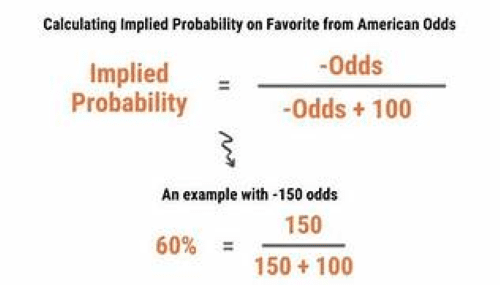FOLD EQUITY & IMPLIED ODDS
Success depends on more than just the cards you hold. Strategic decision-making, supported by math, can significantly impact your results. Every serious poker player must grasp two key concepts: fold equity and implied odds. Mastering these concepts can give you a competitive edge, helping you maximize winnings and minimize losses.
Fold equity is your potential to make an opponent fold when you bet or raise. This concept becomes crucial, especially when your cards aren’t the strongest. Forcing your opponent to fold allows you to win pots without revealing your hand. Knowing when and how to use fold equity can dramatically improve your game, particularly against cautious or tight opponents.
Implied odds, on the other hand, focus on future payouts you might receive if you hit your hand. These odds help you determine whether a risky call could be profitable in the long run.
Although fold equity and implied odds seem separate, they often work together in your decision-making process. Understanding when to rely on fold equity versus factoring in implied odds can make or break a crucial hand. In this article, we’ll break down these concepts, explore their practical uses, and show you how to incorporate them into your strategy.
As you continue reading, you’ll learn how to calculate fold equity and implied odds, when to prioritize one over the other, and how to avoid common pitfalls. By the end, you’ll have a deeper understanding of these essential strategies, enabling you to make more informed decisions and elevate your game.
UNDERSTANDING IMPLIED ODDS
Making the right call requires more than just evaluating immediate pot odds. Implied odds play a crucial role, especially when chasing a drawing hand like a straight or flush. Understanding implied odds helps you determine if a marginal call can be profitable in the long term, considering potential future payouts.

WHAT ARE IMPLIED ODDS?
THE VALUE OF IMPLIED ODDS
Implied odds refer to the additional money you expect to win if you complete your hand on later streets. Unlike pot odds, which only consider the current pot size, implied odds factor in future bets your opponent may contribute if you hit your draw. This concept becomes especially important when facing a bet that doesn’t offer favorable immediate pot odds, but the potential payoff justifies the risk.
For example, if you’re holding a flush draw on the turn, the pot might offer 3:1 odds while your draw has a 4:1 chance of completing. Initially, calling may seem unwise. However, if you anticipate your opponent will make a significant bet on the river when your flush hits, implied odds could make this call profitable.
Implied odds are most valuable when you believe your opponent will contribute more to the pot if you complete your draw. These situations often involve strong hands or well-disguised draws, making it harder for your opponent to fold when you hit. For example, a straight draw that blends into the board might offer higher implied odds than an obvious flush draw.
However, you should not consider implied odds in isolation. It’s crucial to assess your opponent’s tendencies, stack sizes, and table dynamics. Against a tight player who might fold to aggression or avoid committing more chips without a strong hand, implied odds may decrease. On the other hand, against a loose or aggressive opponent, implied odds can increase significantly, as they are more likely to pay you off if you hit your hand.
CALCULATING IMPLIED ODDS

Calculating implied odds is as much art as science. However, understanding the basics can help you make better decisions. Start by considering the pot odds you are currently receiving. Then, estimate the additional amount you can win from your opponent if you complete your draw. This involves predicting how much your opponent will bet or call on future streets.
For example, Suppose the turn card brings you an open-ended straight draw. The pot is $200, and your opponent bets $125 into the pot. Now, the pot is $325, but it will be $450 if you call. This gives you 3.6 to 1 pot odds. You have eight outs with your open-ended straight draw, giving you 4.75 to 1 odds of making your hand. As you can see, mathematically, the correct play here is to fold. To call, the pot odds must be greater than or equal to the odds of making your hand.
However, using implied odds, you believe you can get another $200 from your opponent after the river if you make your straight. This will mean that the pot is then $650, costing you $125 to call, giving you pot odds of 5.2 to 1. Now, by adding your “implied odds,” your pot odds are better than your odds of making the hand. If the conditions are right, you can make the call correctly.
FACTORS INFLUENCING IMPLIED ODDS
Several factors influence your implied odds, including your opponent’s playing style, board texture, and game dynamics. Loose, aggressive opponents usually offer higher implied odds because they are more likely to pay off big hands. In contrast, tight or cautious players may provide lower implied odds since they are less likely to invest further if the board turns dangerous.
BOARD TEXTURE
STACK SIZES
Consider the board texture. If the board could scare your opponent (e.g., a third flush card appears), your implied odds might be lower, as your opponent may fold rather than pay off your hand. Conversely, a disguised hand, such as a hidden straight, can provide higher implied odds, as your opponent might not see the danger and could continue betting.
Stack sizes also play a crucial role in determining implied odds. Deep stacks increase potential payouts, boosting your implied odds. However, with shorter stacks, implied odds decrease due to less money available on future streets.
Implied odds are a crucial poker concept that can turn marginal hands into profitable opportunities. By learning how to calculate and apply implied odds, you can make more informed decisions, especially when pot odds alone don’t justify a call. Implied odds work best when you can predict your opponent’s future actions and estimate the potential for significant payouts.
As you advance in your poker journey, integrating implied odds into your decision-making process will deepen your strategy and help you capitalize on profitable situations that others might overlook. In the next section, we’ll explore how to combine implied odds with fold equity for a well-rounded poker strategy.
COMBINING FOLD EQUITY & IMPLIED ODDS
The concepts of fold equity and implied odds often intersect, creating opportunities to maximize your profitability at the table. By understanding how these two concepts work together, you can make more informed decisions that take both immediate and future possibilities into account. In this section, we’ll explore how to balance fold equity and implied odds, when to prioritize one over the other, and how to apply this knowledge in real-world scenarios.
THE INTERPLAY BETWEEN FOLD EQUITY & IMPLIED ODDS
Fold equity and implied odds might seem like distant concepts, but they often complement each other during decision-making. When you bet or raise, fold equity increases your chances of winning the pot without a showdown. However, if your opponent doesn’t fold, implied odds offer potential future rewards if your hand improves.
For example, if you hold a strong drawing hand like a flush or straight draw, and your opponent bets, you have two options. You can leverage fold equity by raising or rely on implied odds by calling and hoping your hand improves. Raising may force your opponent to fold a better hand, allowing you to win the pot immediately. But if your opponent calls, implied odds provide a safety net, giving you the chance to win a bigger pot if your draw completes.
This combination of fold equity and implied odds is especially effective in semi-bluffing situations. A semi-bluff occurs when you bet or raise with a hand that isn’t currently the best but has the potential to improve. In these scenarios, fold equity allows you to win the pot outright, while implied odds offer extra value if your hand improves on later streets. Understanding this balance enables you to make aggressive moves with drawing hands, knowing you have multiple ways to win the pot.
WHEN TO PRIORITIZE FOLD EQUITY OVER IMPLIED ODDS
In certain situations, fold equity should take precedence over implied odds. This is especially true when your chances of improving your hand are low or when your opponent is likely to fold to aggression. For example, leveraging fold equity through a well-timed bluff or semi-bluff works effectively in heads-up pots against tight players who rarely call big bets without strong hands.
Fold equity also becomes more valuable when a call or check doesn’t offer favorable implied odds. If the board is dry (e.g., no draws are possible) and your opponent’s range is weak, applying pressure with a bet or raise can force a fold, even if your hand isn’t the strongest. In these scenarios, fold equity offers a more reliable path to winning the pot than relying on implied odds.

Additionally, consider fold equity when stack sizes are smaller. When your opponent has limited chips, they are less likely to commit further chips, reducing your implied odds. By using fold equity to push them out of the pot, you can avoid situations where implied odds wouldn’t justify a call.
PRIORITIZING IMPLIED ODDS OVER FOLD EQUITY

On the other hand, there are situations where implied odds should take center stage. This is often the case when you have a strong drawing hand and believe your opponent is unlikely to fold. The potential payout increases in multi-way pots, where several players are involved, making implied odds more attractive.
For instance, if you’re on a draw with the potential to win a massive pot, and your opponent is unlikely to fold regardless of your bet, prioritizing implied odds can yield higher profits. In this case, rather than pushing for fold equity, you might call and rely on your implied odds to maximize your return if your draw completes.
Implied odds also become crucial when playing against loose or aggressive opponents. These players are likelier to call large bets or raises, even when the board turns dangerous. In these situations, it’s wise to focus on your implied odds, as the potential future payouts outweigh the benefits of trying to force a fold..
MEASURING AGGRESSION VS. CAUTION
The key to mastering fold equity and implied odds is striking the right balance between aggression and caution. Understanding your opponent’s tendencies, reading the board, and evaluating your hand’s potential are vital factors in determining which concept to prioritize.
For example, against a tight player, you might choose to be more aggressive, leveraging fold equity to take down pots without showing down your hand. Conversely, you might lean on implied odds against a loose player who tends to chase draws, looking to capitalize on their willingness to pay off big hands.
Consider the overall dynamics of the hand in situations where both fold equity and implied odds are in play. If you’re confident that your opponent will fold to aggression, go ahead and leverage fold equity. If you can extract more value by seeing another card, prioritize implied odds. The best poker players can fluidly switch between these concepts, adapting their strategies based on the specific circumstances of each hand.
Combining fold equity and implied odds is essential to developing a well-rounded poker strategy. By understanding when to prioritize one concept over the other, you can make more profitable decisions at the table. Whether using fold equity to win pots without a showdown or relying on implied odds to maximize value, the key is knowing how to adapt your strategy based on your opponent and the situation.
As you refine your poker skills, integrating fold equity and implied odds into your decision-making process will allow you to navigate complex situations confidently. In the next section, we’ll explore practical applications and real-world examples of how these concepts can be applied in various poker scenarios.
PRACTICAL APPLICATIONS
Understanding fold equity and implied odds is essential, but applying these concepts in real-world poker situations is where they truly become valuable. This section will delve into practical examples that effectively demonstrate how to use fold equity and implied odds. Examining these scenarios gives you a clearer sense of when and how to incorporate these strategies into your play.

LEVERAGING FOLD EQUITY WITH A SEMI-BLUFF
RELYING ON IMPLIED ODDS IN A MULTI-WAY POT
Suppose you’re on the button with a flush draw, and the flop comes down with two cards of your suit. Your opponent, a tight player, bets the pot from early position. You could call, relying on implied odds if your flush hits, but this may not maximize your opportunity. Instead, consider leveraging fold equity with a semi-bluff. Raising creates the possibility of winning the pot immediately if your opponent folds. Even if your opponent calls, you still have the potential to complete your flush on the turn or river, allowing you to win a larger pot. This dual-layered approach combines both fold equity and implied odds, increasing your chances of a profitable outcome.
Now, imagine you’re in a multi-way pot, holding an open-ended straight draw. The pot is already large, and several players have shown interest in the hand. In this scenario, a bluff might not be effective, as you’re facing multiple opponents who may not fold. Here, implied odds take precedence. By calling and seeing the next card, you rely on the potential future payouts if your draw hits. Given the size of the pot and the likelihood that at least one opponent will continue betting if you complete your straight, this situation offers significant implied odds, making a call more favorable than a raise.
BALANCING FOLD EQUITY & IMPLIED ODDS

Consider a scenario where you hold a top pair with a strong kicker on the flop, but the board starts getting dangerous with possible straight and flush draws. Your opponent bets, and you sense they might be on a draw. Here, balancing fold equity and implied odds becomes critical. You could raise to protect your hand and possibly make your opponent fold their draw, utilizing fold equity. However, if they call, the pot grows larger, and you must be prepared to navigate the turn and river, considering the implied odds if they complete their draw. Understanding both concepts helps you make a more informed decision, blending aggression with caution.
COMMON MISTAKES TO AVOID
While fold equity and implied odds are powerful tools, they can lead to mistakes if not applied correctly. Let’s discuss a few common pitfalls and how to avoid them.
- Overestimating Fold Equity: One common mistake is overestimating your fold equity, especially against loose players. If your opponent is unlikely to fold to aggression, relying too heavily on fold equity can backfire. Continually assess your opponent’s tendencies before making a move, and be prepared for the possibility that they might call or raise your bluff.
- Misjudging Implied Odds: Another mistake is misjudging implied odds, particularly when your opponent has a small stack or is unlikely to continue betting. If there isn’t enough money left to win on future streets, chasing draws based solely on implied odds can lead to losses. Make sure to factor in stack sizes and your opponent’s likelihood of paying off your hand before making a call.
- Ignoring Table Dynamics: Table dynamics influence fold equity and implied odds, yet some players overlook this factor. For example, if the table has been particularly aggressive, fold equity may be reduced, as players are more willing to call or re-raise. Similarly, implied odds may decrease in a passive game if opponents are unwilling to build large pots. Always adjust your strategy based on the game’s flow and the players’ tendencies.



I haven’t checked in here for some time because I thought it was getting boring, but the last few posts are good quality so I guess I’ll add you back to my everyday bloglist. You deserve it my friend 🙂
As a Newbie, I am permanently browsing online for articles that can benefit me. Thank you